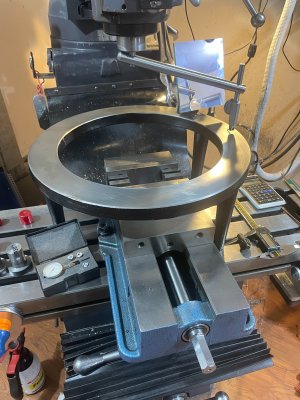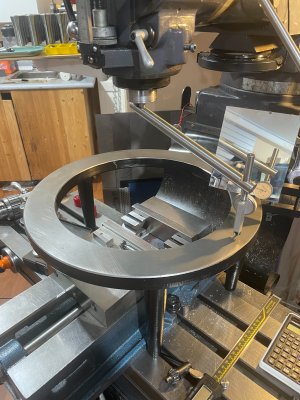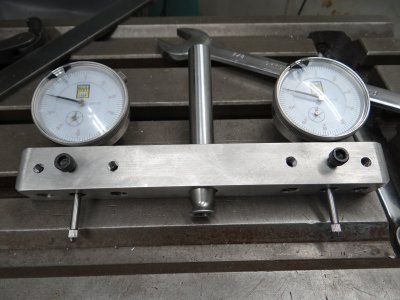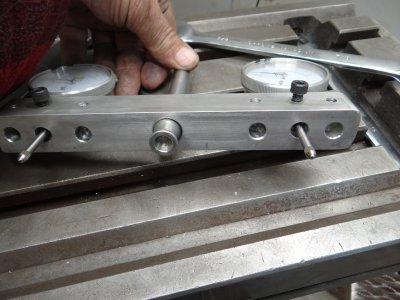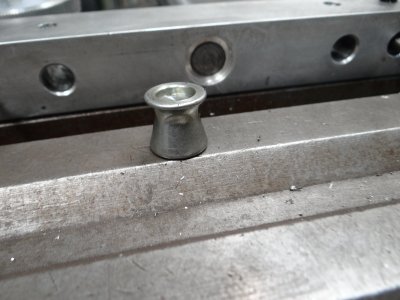@slow-poke - is there a member in your area with a surface grinder? If not, I'll happily grind you a matched set of 3 blocks if you pay the shipping and provide the blocks.
I forgot to mention that I made blocks that were taller than my vise so I could tram without removing the vise. (ya ya ya, they are not really 1-2-3 blocks.)
As a bonus, grinding your own tall blocks provides a great platform for a grinding wheel balancer.
Last, but not least, using a brake rotor has 3 more BIG advantages.
1. You don't need to jump the T-Slots. It's a solid surface all the way around.
2. A new 11 or 12 inch rotor is cheap.
3. A brake rotor extends the surface of the bed back another 3 or 4 or more inches so you get a longer distance to improve the tram.
I forgot to mention that I made blocks that were taller than my vise so I could tram without removing the vise. (ya ya ya, they are not really 1-2-3 blocks.)
As a bonus, grinding your own tall blocks provides a great platform for a grinding wheel balancer.
Last, but not least, using a brake rotor has 3 more BIG advantages.
1. You don't need to jump the T-Slots. It's a solid surface all the way around.
2. A new 11 or 12 inch rotor is cheap.
3. A brake rotor extends the surface of the bed back another 3 or 4 or more inches so you get a longer distance to improve the tram.

